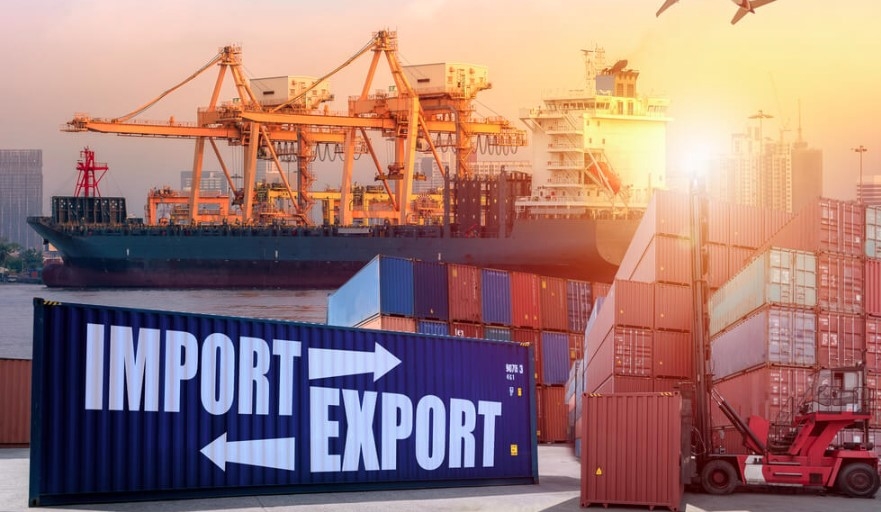Trade surplus hits US$19.56 billion, agro-forestry-fishery exports top US$58 billion
VOV.VN - The General Statistics Office (GSO) released its report on Vietnam’s socio-economic performance for October and over the past ten months of 2025 on the morning of November 6.
During the reviewed period, Vietnam’s total import-export turnover reached US$762.44 billion, up 17.4% compared with the same period last year. Exports stood at US$391 billion, up 16.2%, while imports totaled US$371.44 billion, up 18.6%, resulting in a trade surplus of US$19.56 billion.
In October alone, exports hit US$42.05 billion, down 1.5% from the previous month. The domestic economic sector contributed US$8.6 billion, down 0.7%, while the foreign-invested sector (including crude oil) delivered US$33.45 billion, down 1.7%. Compared with October 2024, exports rose 17.5%, with the domestic sector falling 17.4% and the FDI sector soaring 31.8%.
Imports in October totaled US$39.45 billion, down 1% month-on-month. The domestic sector accounted for US$11.38 billion, rising 4.2%, while the FDI sector recorded US$28.07 billion, down 2.9%. Year-on-year, October imports grew 16.8%, with the domestic sector dropping 11% and FDI rising 33.8%.
Over the past ten months, the domestic sector exported US$94.17 billion (24.1% of total exports), unchanged from the previous month, while the FDI sector contributed US$296.83 billion (75.9%), up 22.5%. There were 36 export items valued over US$1 billion, making up 94.1% of total exports, including 7 items exceeding US$10 billion, representing 67.9%. By category, processed industrial goods accounted for 88.7%, agricultural and forestry products 8.3%, fisheries 2.4%, and fuels and minerals 0.6%.
For imports over ten months, the domestic sector imported US$117 billion and FDI US$254.44 billion. There were 47 import items surpassing US$1 billion, representing 93.9% of total imports, including 4 items above US$10 billion, totaling 52.7%.
Capital goods comprised 93.8%, including machinery, equipment, and tools at 52.6%, and raw materials and fuels at 41.2%; consumer goods made up 6.2%.
Regarding trade partners, the US was Vietnam’s largest export market at US$126.2 billion, while China was the top source of imports at US$150.9 billion. Vietnam’s trade surplus with the U.S. stood at US$111 billion (up 28.2%), with the EU US$32.2 billion (up 11.2%), and with Japan US$1.6 billion (down 29.8%). Imports from China reached US$93.9 billion (up 38.6%), from the Republic of Korea (RoK) US$25.6 billion (up 1.6%), and from ASEAN US$11.6 billion (up 55.9%).
Overall, the domestic sector ran a trade deficit of US$22.83 billion, while the FDI sector posted a trade surplus of US$42.39 billion, leading to a total trade surplus of US$19.56 billion, compared with US$23.18 billion in the same period last year.

Meanwhile, according to the Ministry of Agriculture and Environment, agro-forestry-fishery exports throughout the reviewed period reached US$58.13 billion, up nearly 13% compared with the same period in 2024.
Key product groups, including crops, seafood, and wood, continued to post strong growth, playing a significant role in supporting the sector’s 2025 export target of US$70 billion.
By region, Asia remained Vietnam’s largest export market, accounting for 44.7% of total agricultural, forestry, and fisheries exports, followed by the Americas at 22.7% and Europe at 13.8%. Notably, exports to Europe rose sharply by 37.5%, while shipments to Africa surged 83.6% year-on-year.
The three largest export markets remained China (21.4%), the US (20.4%), and Japan (7%), with growth of 12%, 6.2%, and 20.4%, respectively.
On the import side, agro-forestry-fishery imports wered estimated at US$40.54 billion, up 11.5% year-on-year. Vietnam primarily imported from Asia (29.7%) and the Americas (23.8%), with China (9.8%), the US (9%), and Argentina (6.9%) as the top suppliers.
With the current growth trajectory, the agricultural sector is projected to meet and potentially exceed the US$70 billion export target for 2025, supported by sustained high commodity prices, recovering demand in key markets, and effective implementation of bilateral and multilateral trade agreements.





